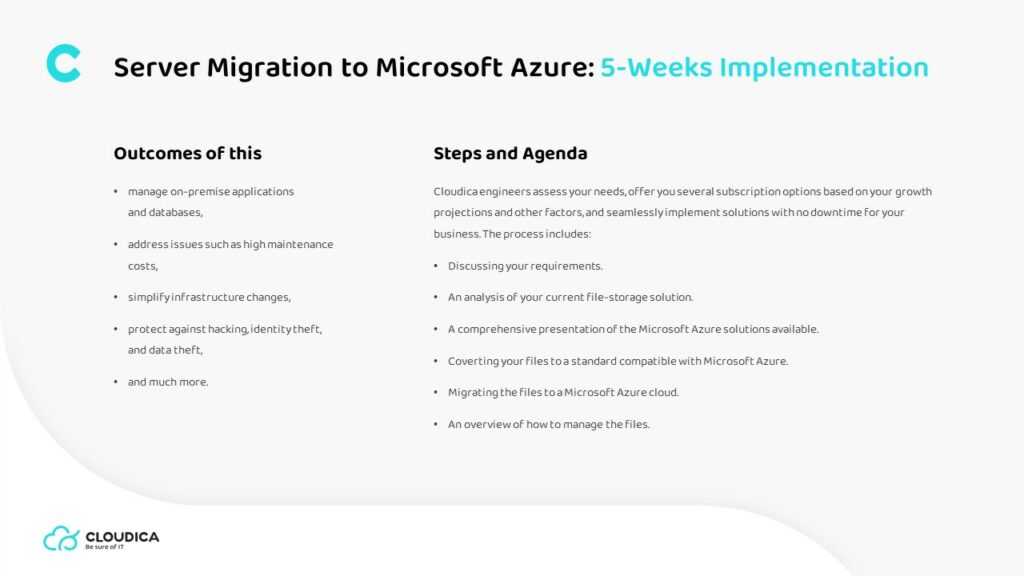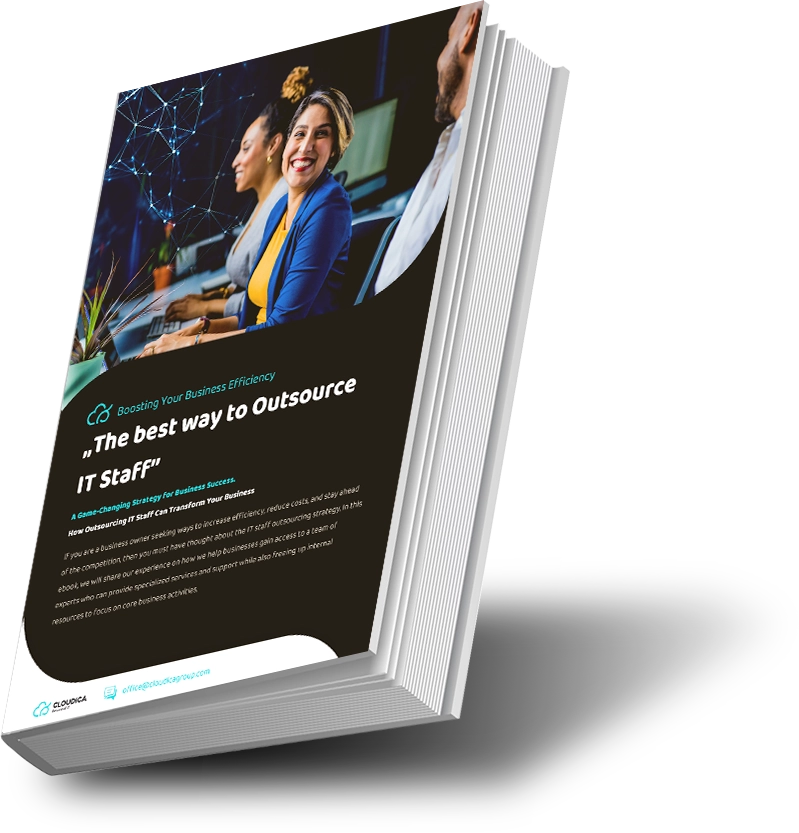5-Weeks Implementation
Server Migration to Microsoft Azure
What is it?
Cloudica’s Server Migration to Microsoft Azure is designed to safely and effectively transfer clients’ files and other digital data to a Microsoft cloud-based system. Our turnkey solution allows us to streamline the process of converting your repositories – gathered over many years and systems – and encode it in a uniform and universally integrated standard. We dig into our decades of collective knowledge in Microsoft Azure cloud services to bring you the technology of the future.
What is for?
Both small and medium-sized companies can benefit from using Microsoft Azure for their cloud computing since this allow clients to save money in the long term and ensure very high uptime of data. Additionally, files are protected by the latest security innovations.
What are the benefits?
• Microsoft Azure solutions allow your business to remain scalable, flexible, and your data available
• Apps based on Microsoft Azure are more versatile
• Clients see an increase in performance and efficiency
• Minimal code changes are required
• Microsoft’s Azure scalable architecture can handle massive volumes of data and analyze it
• Our team can make the transition to a Microsoft Azure-based infrastructure simple
Outcomes of this
• manage on-premise applications and databases,
• address issues such as high maintenance costs,
• simplify infrastructure changes,
• protect against hacking, identity theft, and data theft,
• and much more.
Steps and agenda
Cloudica engineers assess your needs, offer you several subscription options based on your growth projections and other factors, and seamlessly implement solutions with no downtime for your business. The process includes:
• Discussing your requirements.
• An analysis of your current file-storage solution.
• A comprehensive presentation of the Microsoft Azure solutions available.
• Coverting your files to a standard compatible with Microsoft Azure.
• Migrating the files to a Microsoft Azure cloud.
• An overview of how to manage the files.
Most popular offerings
Contact
Ready to meet the only technology partner you'll ever need?









